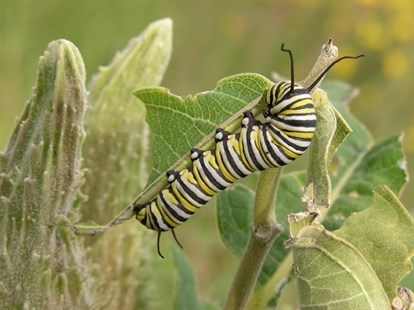
Image Credit: istockphoto.com
June 05, 2014 - 4:01 AM
The dramatic decline in the monarch butterfly population in Eastern North America is due largely to the steady loss of milkweed crops in U.S. breeding grounds, according to a new study that researchers say provides the first proof of the critical connection.
Scientists at the University of Guelph say they picked apart the various factors linked to the drop in migratory monarch butterflies and confirmed theories that the lack of milkweed is likely responsible for the plummeting butterfly population.
Ryan Norris, a professor in the university's Department of Integrative Biology, co-wrote the report and said it provides the first evidence that monarch butterfly numbers are most sensitive to changes in the availability of milkweed in certain breeding areas.
"We're losing milkweed throughout Eastern North America, but what we found out is milkweed loss specifically in the Midwestern U.S. is likely contributing the most to monarch declines," he said upon the study's publication Wednesday in the Journal of Animal Ecology.
Norris said the loss of the tall, leafy plant is being felt most in the Corn Belt region and other high-intensity agricultural areas that are using herbicides to wipe out milkweed.
Norris, lead author Tyler Flockhart and members of Australia's national science agency say industrial farming contributed to a 21 per cent decline in milkweed plants between 1995 and 2013, mostly in the butterflies' central breeding region.
The plant is important for the distinct orange and black butterfly species because the insect lays its eggs on it. It is also the only group of plants that monarch caterpillars feed on before developing into butterflies.
"The rapid loss of milkweed projected for this region, attributable to land cover changes and shifts in agricultural practices, is a very large concern," Flockhart said, adding that the continued loss of milkweed will cause the monarch population to decline further.
"Reducing the negative effects of milkweed loss in the breeding grounds should be the top conservation priority to slow or halt future population declines of the monarch in North America."
It's estimated that there was a 90 per cent decline in monarchs this past year, Norris said.
The David Suzuki Foundation estimates that monarch populations in Mexico plummeted to a record low of about 33.5 million this year from an annual average of about 350 million.
The study's findings, which are based on a mathematical model that includes all known factors linked to the decline of the butterflies, challenge long-held beliefs that their population drop was due to the degradation of their wintering grounds in Mexico.
Norris said that led to several Mexican presidential decrees to protect butterfly habitats and curb illegal deforestation.
"We have essentially ignored what's been happening in the breeding grounds and focusing our efforts on the wintering grounds and this is kind of the situation we're in," he said.
The authors say the loss of milkweed crops is likely not the only cause of the butterflies' falling numbers, but they're calling on governments to restore milkweed habitats.
Mexico, the United States and Canada agreed in February to form a working group on the conservation of monarch butterflies, with discussions expected to include milkweed restoration.
News from © The Canadian Press, 2014